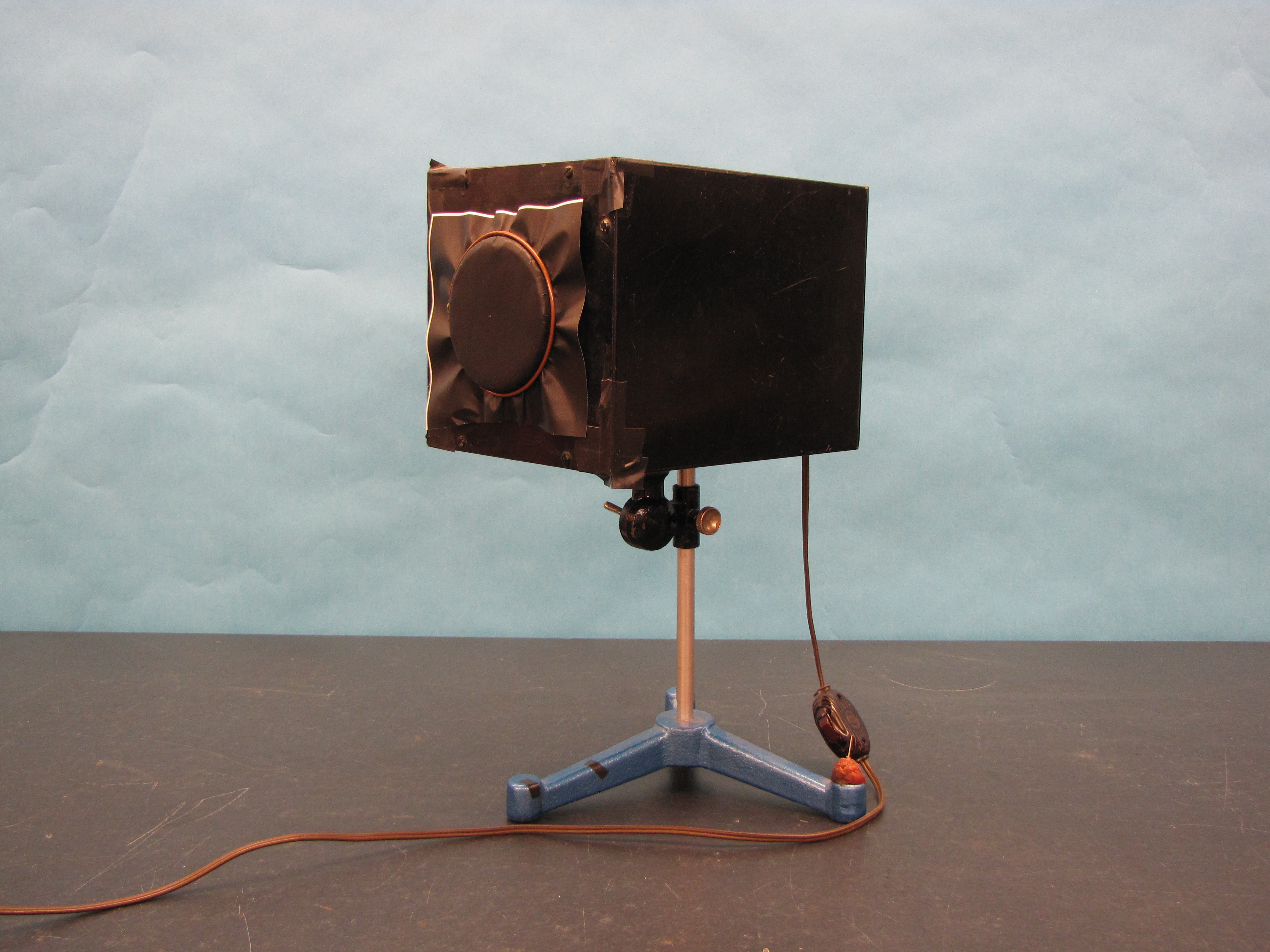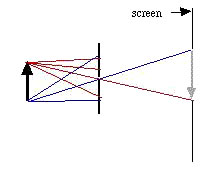Demos: 7A-26 Rectilinear Propagation of Light


A clear (non-frosted) electric bulb is enclosed in a light-tight box. One end of the box is covered partially with thin, black paper and a screen is placed two to three meters away. With the bulb on, if a pinhole is pricked through the black paper, an enlarged image of the filament will be seen on the screen.
Directions: The room lights must be dim (preferably out) for the students to be able to see the effect. Prick the black paper after turning on the lamp. If the image is not visible to the students near the back of the room, try using the video projector and camera.
Suggestions for Presentation: Pinholes always seem to present students with a challenge because they don’t do what is expected. To begin the demo, ask the students what they think would be observed on the screen if you poked a small hole in the paper. Most, if not all, will guess that you get an image of the hole, albeit somewhat enlarged. Do the demo and make sure that they see the inverted image of the bulb. Get the students to focus on the fact that light leaves each point on source traveling in all directions. Have them draw an object, then pass the light rays from two different points on the object through the pinhole (see diagram). Also point out that as the hole gets bigger the image gets fuzzier.
Applications: Pinhole cameras. These can take sharp pictures but require long exposures because of the lack of light. The purpose of a lens is take an “infinite” number of pinholes and focus all the rays in one spot, requiring much less time for exposure. (Another demo, which we do not presently have, involves poking many holes in the black paper and getting an image for each hole on the screen. A lens properly placed gathers all of these images into one.) Also, squinting one’s eyes often produces a sharper image because the interleaving eyelashes create small pinholes. Finally, one can point out that pinholes are excellent devices for projecting the sun onto a surface, particularly during eclipses.
Last Updated: Nov 30, 2023 11:25 AM